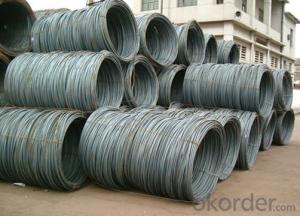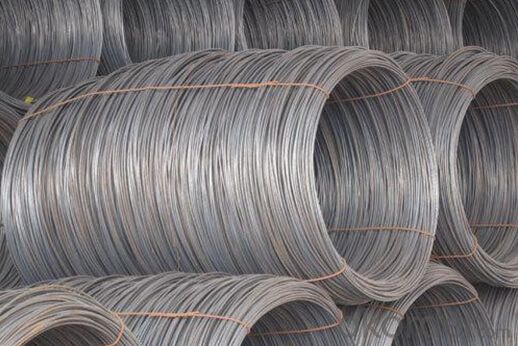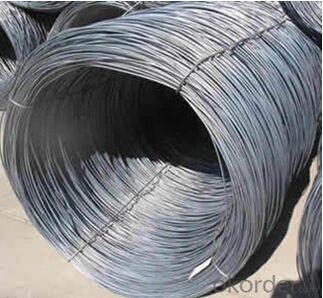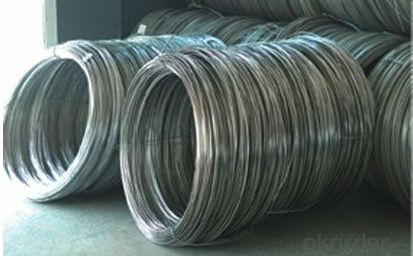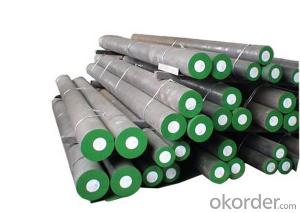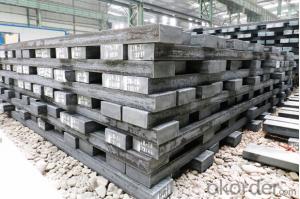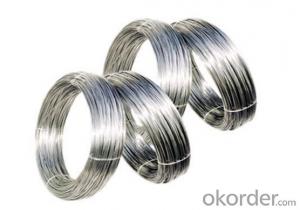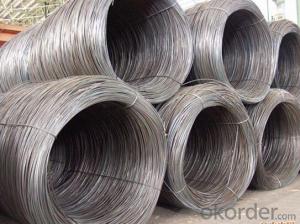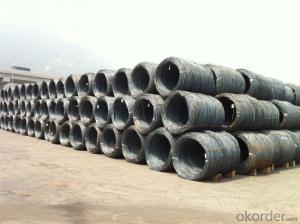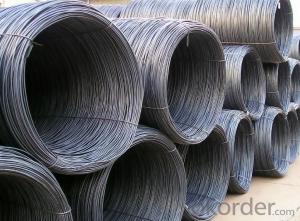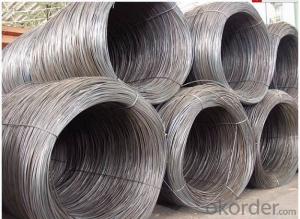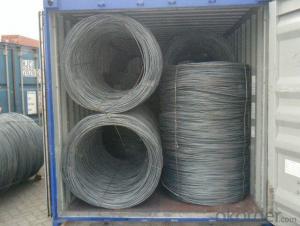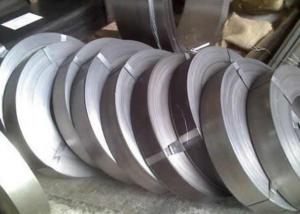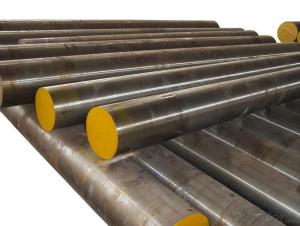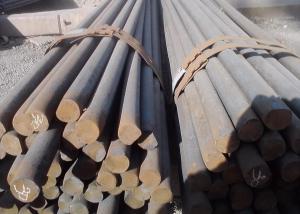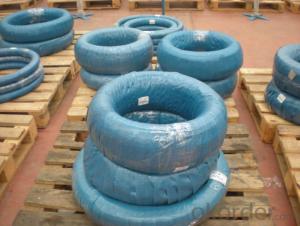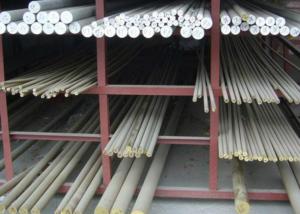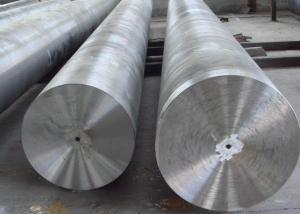Dia.5.5mm SAE1008B Steel Wire Rod with High Quantity
- Loading Port:
- Tianjin
- Payment Terms:
- TT OR LC
- Min Order Qty:
- 10 m.t.
- Supply Capability:
- 10000 m.t./month
OKorder Service Pledge
OKorder Financial Service
You Might Also Like
Specification
Dia.5.5mm SAE1008B Steel Wire Rod with High Quantity
Details of the Dia.5.5mm SAE1008B Steel Wire Rod with High Quantity
| Steel Grade | Q195-Q235,Q235,SAE 1008-1018 Hot Rolled Steel Wire Rod |
| Diameter | 5.5, 6.5, 7,8, 9,10, 12,14mm.etc. |
| Coil weight | 2m.t. |
| Application | drawing, construction materials, machinery parts,construction for Houses, Bridges, Roads,Packing |
| Deliver Time | 25-30 days after receipt of L/C or deposit by T/T |
| Packing | In coils, loading in container or by bulk vessel |
| Payment terms | 1).100% irrevocable L/C at sight. |
| 2).30% T/T prepaid and the balance against the copy of B/L. | |
| 3).30% T/T prepaid and the balance against L/C |
| Chemical Composition(%) | ||||||
| C | Mn | Si | S | P | Cr | |
| SAE1006B | 0.03~O.07 | ≤0.32 | ≤0.30 | ≤0.045 | ≤0.040 | 0.3-0.35 |
| Mechanical properties | ||||||
| Yield strength(N/mm2) | Tensile strength(N/mm2) | Elongation(%) | ||||
| 250-280 | 350-380 | ≥32 | ||||
| Grade | Chemical Composition(%) | |||||
| C | Mn | Si | S | P | Cr | |
| SAE1008B | 0.10max | 0.3~O.50 | 0.15max | 0.050max | 0.040 max | 0.3-0.35 |
| Mechanical properties | ||||||
| Yield strength(N/mm2) | Tensile strength(N/mm2) | Elongation(%) | ||||
| ≥195 | 315-430 | ≥30 | ||||
Supplier of the Dia.5.5mm SAE1008B Steel Wire Rod with High Quantity
CNBM International Corporation is the most import and export platform of CNBM group(China National Building Material Group Corporation) ,which is a state-owned enterprise, ranked in 270th of Fortune Global 500 in 2015.
With its advantages, CNBM International are mainly concentrate on Cement, Glass, Iron and Steel, Ceramics industries and devotes herself for supplying high quality series of refractories as well as technical consultancies and logistics solution.
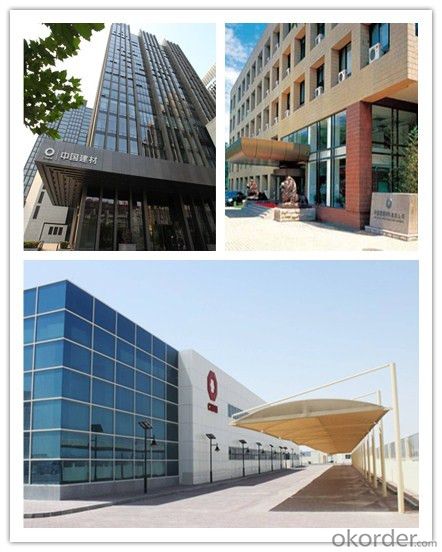

Delivery of the Dia.5.5mm SAE1008B Steel Wire Rod with High Quantity
Packaging Detail | Sea worthy packing /as per customer's packing instruction |
Delivery Detail | 15 ~ 40 days after receiving the deposit |
Products Show
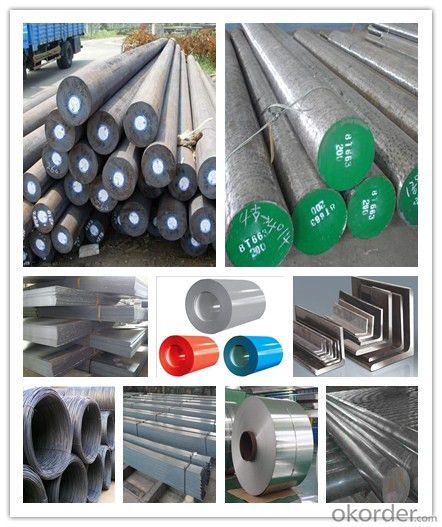
FAQ:
Are you a trading company or manufacturer? | Manufacturer |
What’s the MOQ? | 3 metric ton |
What’s your delivery time? | 15-35 days after downpayment received |
Do you Accept OEM service? | Yes |
what’s your delivery terms? | FOB/CFR/CIF |
What's the Payment Terms? | 30% as deposit,70% before shipment by T/T |
Western Union acceptable for small amount. | |
L/C acceptable for large amount. | |
Scrow ,Paybal,Alipay are also ok | |
Why choose us? | Chose happens because of quality, then price, We can give you both. Additionally, we can also offer professional products inquiry, products knowledge train (for agents), smooth goods delivery, excellent customer solution proposals. |
What's your available port of Shipment? | Main Port, China |
What’s your featured services? | Our service formula: good quality+ good price+ good service=customer's trust
|
Where are your Market? | Covering more than 160 countries in the world |
- Q: How does stainless steel contribute to the automotive industry?
- Stainless steel contributes to the automotive industry by providing durability, corrosion resistance, and aesthetic appeal to various parts and components. It is commonly used in exhaust systems, engine components, body panels, and trim pieces, ensuring longevity and maintaining the integrity of vehicles even in harsh conditions.
- Q: What are the main applications of special steel in the packaging machinery?
- Special steel is commonly used in packaging machinery for its high strength, durability, and resistance to wear and corrosion. It is primarily employed in the production of components such as blades, knives, rollers, and bearings, ensuring smooth and efficient packaging operations. Additionally, special steel's heat resistance and ability to maintain precision under extreme conditions make it suitable for applications involving high-speed packaging, cutting, and sealing processes.
- Q: What are the applications of special steel in the automotive supply chain?
- Special steel has various applications in the automotive supply chain. It is widely used in the manufacturing of engine components, such as crankshafts, camshafts, and connecting rods, due to its high strength and resistance to wear. Special steel also finds application in the production of suspension and steering components, as well as gears and shafts, which require excellent toughness and durability. Moreover, it is utilized in the fabrication of safety-related parts like seat belt anchors and airbag systems, ensuring the necessary strength and reliability. Overall, special steel plays a crucial role in enhancing performance, safety, and efficiency in the automotive industry.
- Q: Can special steel be used in the textile industry?
- Yes, special steel can be used in the textile industry. Special steel, such as stainless steel, can be used in the production of various textile machinery components, including needles, pins, and loom parts. It offers durability, corrosion resistance, and strength, making it suitable for demanding textile manufacturing processes. Additionally, special steel can be used in the fabrication of textile machine frames and structures, providing the necessary stability and support.
- Q: How does special steel contribute to the manufacturing of structural components?
- The unique properties and characteristics of special steel are crucial in the manufacturing of structural components. Firstly, its exceptional strength and durability make it an ideal material for load-bearing structures, as it can withstand high levels of stress, pressure, and heavy loads, ensuring their safety and integrity. In addition, special steel's excellent corrosion resistance is particularly important for structural components exposed to harsh environments. This feature helps prevent rusting and deterioration, thereby extending the lifespan of the components and reducing maintenance costs. Moreover, special steel offers a high degree of versatility in terms of design and fabrication. It can be easily shaped, molded, and welded, allowing manufacturers to create complex and intricate components with precision. This flexibility enables the production of customized components that meet specific requirements, enhancing the overall performance and functionality of the structures. Furthermore, special steel exhibits excellent heat resistance and fireproofing properties, making it suitable for components exposed to high temperatures or fire hazards. This is particularly important in industries such as industrial facilities, power plants, or transportation infrastructure, where fire protection is vital. Additionally, special steel often has superior fatigue resistance, allowing it to withstand repetitive or cyclic loading without suffering from fatigue failure. This property is crucial for components subjected to dynamic or fluctuating loads. In conclusion, special steel significantly contributes to the manufacturing of structural components by providing strength, durability, corrosion resistance, versatility in design, heat resistance, fireproofing, and fatigue resistance. Its unique properties make it an essential material choice for constructing safe, reliable, and long-lasting structures across various industries.
- Q: What are the characteristics of tool steel?
- Tool steel is a type of steel that possesses several distinctive characteristics. Firstly, it is known for its exceptional hardness, making it highly resistant to wear and abrasion. Additionally, tool steel has excellent toughness and strength, allowing it to withstand high impact forces without fracturing. It also exhibits good heat resistance, retaining its hardness and strength even at elevated temperatures. Another notable characteristic of tool steel is its ability to be easily shaped and machined, making it a preferred choice for manufacturing tools and equipment. Overall, the key attributes of tool steel include hardness, toughness, strength, heat resistance, and machinability.
- Q: How is magnetic alloy steel used in the production of magnetic components?
- Magnetic alloy steel is used in the production of magnetic components due to its high magnetic permeability and excellent magnetic properties. It is commonly utilized in manufacturing various magnetic components such as cores, stators, rotors, and transformers. The alloy's magnetic properties allow for efficient magnetization and demagnetization, making it suitable for applications where strong magnetic fields are required. Additionally, magnetic alloy steel is often used in electrical motors, generators, and magnetic sensors, contributing to their overall performance and reliability.
- Q: What are the different impact-resistant grades of special steel?
- There are various impact-resistant grades of special steel, including AR400, AR500, AR550, and AR600. These grades are specifically designed to withstand high levels of impact and abrasion, making them suitable for applications such as construction equipment, industrial machinery, and mining tools.
- Q: What are the different casting methods used for special steel?
- There are several different casting methods used for special steel, including sand casting, investment casting, continuous casting, and centrifugal casting. Each method has its own advantages and is suited for specific applications. Sand casting is a common and cost-effective method that involves pouring molten steel into a sand mold. Investment casting, on the other hand, uses a wax pattern that is coated in a ceramic shell and then melted away to leave a cavity for the steel to be poured into. Continuous casting is a continuous process where molten steel is poured into a water-cooled mold and solidifies into a continuous strand. Finally, centrifugal casting involves spinning a mold while pouring the molten steel, creating a centrifugal force that helps distribute the metal evenly. These different methods allow for the production of special steel components with various sizes, shapes, and properties.
- Q: How does mold steel resist wear and erosion?
- Mold steel resists wear and erosion due to its high hardness, toughness, and resistance to deformation. It has a fine microstructure that allows it to withstand the repetitive stresses and strains associated with molding processes. Additionally, certain alloying elements like chromium and molybdenum enhance its corrosion resistance, making it more durable against wear and erosion caused by environmental factors.
Send your message to us
Dia.5.5mm SAE1008B Steel Wire Rod with High Quantity
- Loading Port:
- Tianjin
- Payment Terms:
- TT OR LC
- Min Order Qty:
- 10 m.t.
- Supply Capability:
- 10000 m.t./month
OKorder Service Pledge
OKorder Financial Service
Similar products
Hot products
Hot Searches
Related keywords
